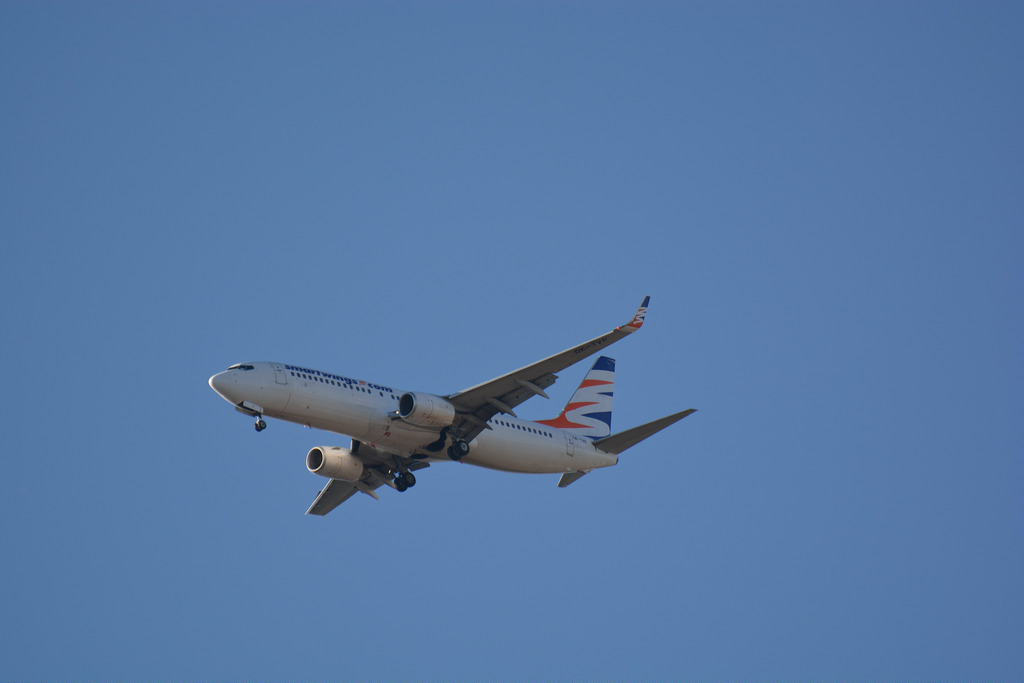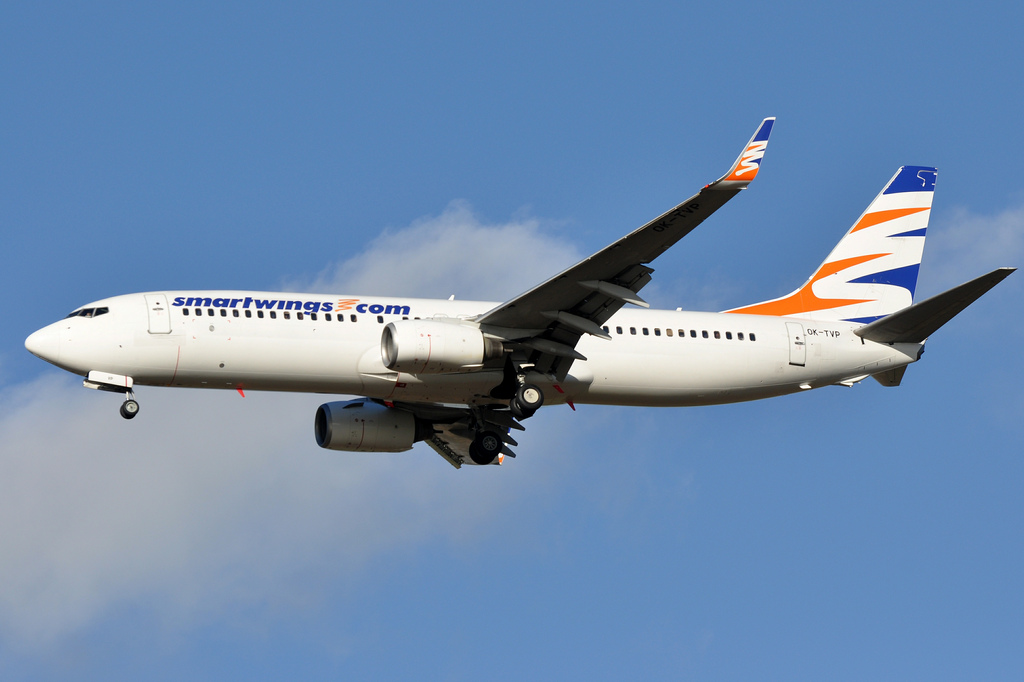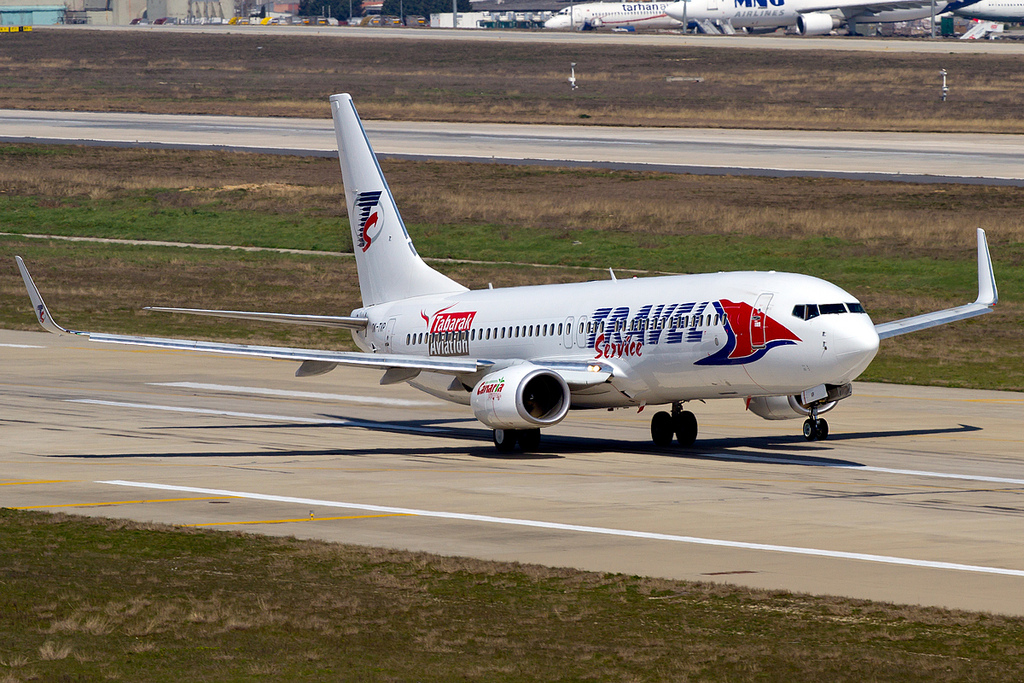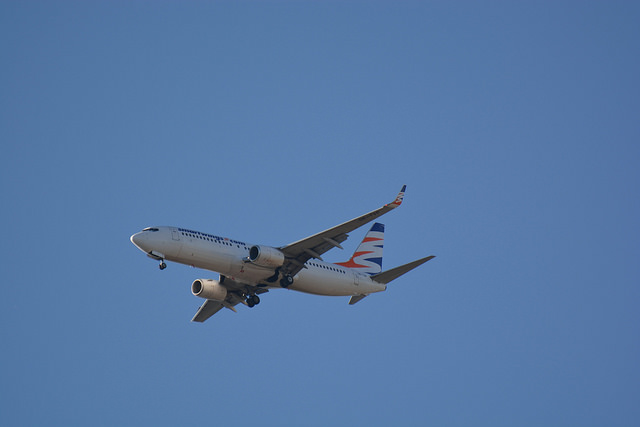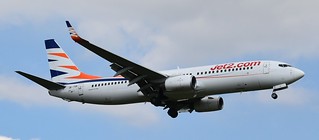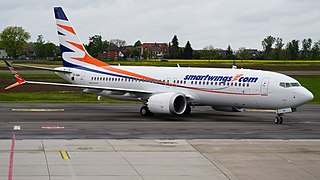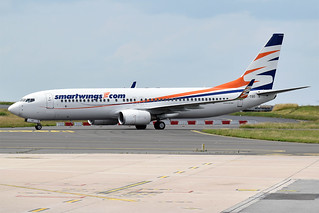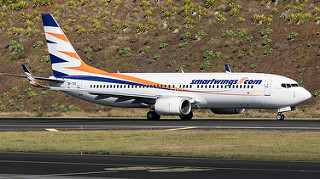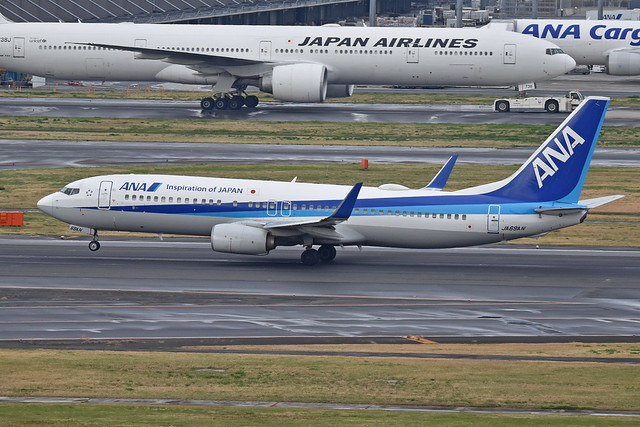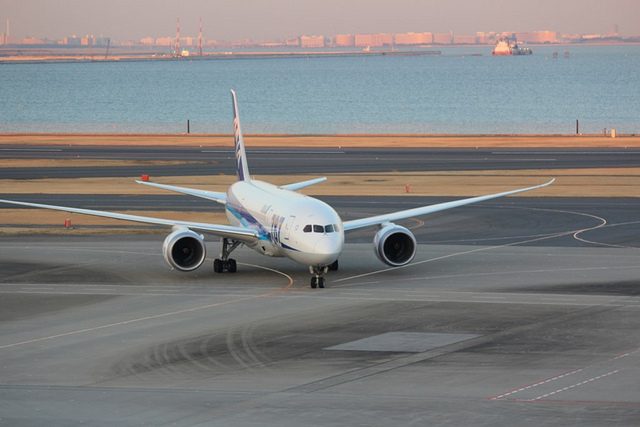Smartwings B738 at Budapest on Mar 23rd 2018, smoke from tug prompts evacuation
Last Update: July 17, 2023 / 18:17:31 GMT/Zulu time
Incident Facts
Date of incident
Mar 23, 2018
Classification
Accident
Airline
Smartwings
Flight number
6H-716
Departure
Budapest, Hungary
Destination
Tel Aviv, Israel
Aircraft Registration
OK-TVP
Aircraft Type
Boeing 737-800
ICAO Type Designator
B738
The airline reported the smoke came from a nearby vehicle, not the aircraft itself, and entered the aircraft cabin via the engines and air conditioning system causing commotion on board despite the captain's repeated announcements that the smoke was coming from the outside of the aircraft and everything was okay on board of the aircraft. These announcements however did not prevent the emergency slides being deployed unnecessarily. One passenger needed to be taken to a hospital with head injuries, the others were taken to hotels to await yet another replacement aircraft.
The intiially assigned aircraft, a Travel Service Boeing 737-800 registration OK-TVO, had been unable to depart the previous evening. OK-TVP therefore had been positioned to Budapest and was about to depart in the wee morning hours of the next day.
OK-TVP positioned from Budapest to Prague (Czech Republic) about 8 hours after the evacuation.
OK-TVO was able to position to Paris Charles de Gaulle (France) about 105 minutes prior to the evacuation and re-entered service about 5 hours after landing in Paris.
On May 15th 2018 Czechia's UZPLN reported that following boarding and engine start thick smoke develope in the cabin causing panic amongst the passengers, who flocked to the aft doors. Cabin crew was unable to cope with the "unexpected onslaught" of the passengers, who opened the aft doors activating the emergency slides, and an uncoordinated evacuation took place. The smoke originated from a heavily smouldering ground security vehicle, the smoke entered the air conditioning systems. The captain observed both aft door open indications illuminated, at the same time the chief flight attendant advised of the situation. The captain restarted the APU, shut down both engines and requested stairs and coaches for the passengers. One of the passengers did not manage the uncoordinated evacuation and ended up below the left hand evacuation slide with serious injuries. Emergency services initiated treatment.
In July 2023 the Hungarian KBSZ released their final report concluding the probable causes of the accident were:
In the course of its investigation, the IC concluded that the direct cause of the accident was the lack of communication from the cabin crew on duty in the aft galley to the rest of the crew, and identified the presence of the panic on board as an indirect cause, which was caused by the misjudgement of the origin of the smoke.
In addition to those above, the IC presumes the following contributing factors:
– passengers’ fatigue;
– malfunction of the pushback tug;
– ambiguity of the emergency procedures;
– initiation of an evacuation without approval;
– late reaction of the flight crew to the situation.
The KBSZ analysed:
Passenger behaviour
The accident occurred in the early hours of 23 March 2018, after nearly 10 hours of waiting at the airport, which made the passengers not only tired but also exhausted. This may have contributed to the development of the panic.
In the experience of the IC, wrong or erroneous decisions are more often based rather on emotion than on an objective assessment of the circumstances. This is especially true in case of mentally and/or physically tired individuals, where an external stimulus that induces fear in the individual can easily generate uncontrollable panic. In general, some individuals react in unpredictable ways to a panic situation, in which their reaction may endanger the physical safety of others. In addition, people in panic can also affect their environment, triggering a process in which people no longer react to the stimulus that triggers the panic, but to the behaviour of panicked people.
This is exactly what was observed in this case, where the behaviour of some passengers influenced other passengers in such way that panic developed, which was combined with poor situational awareness.
The passengers panicked when they saw the smoke entering the aft passenger cabin and their only goal was to leave the aircraft. The IC’s opinion is that the sight and smell of smoke inside and outside of the aircraft, combined with the artificial yellowish exterior lighting at the apron frightened several passengers, which mistakenly confirmed the presence of fire for them. The word ‘FIRE’ shouted by several passengers also created panic in the other passengers, which might have been greatly exacerbated by the fact that they were in a crowded and narrow place and were also limited in their ability to leave the aircraft.
Passengers tried to leave the aircraft as quickly as possible by moving towards the aft emergency exits.
Cabin crew activity
The rest time of the flight attendants complied with the rules and regulation, with no active duty in the last 48 hours preceding the accident. Their working hours started 4-6 hours before the accident on the given day and although they were called in from standby, the IC’s opinion is that this should not have had any influence on their activity or on the handling of the situation.
According to the IC, the passengers’ unexpected panic reaction limited the decision-making abilities of the cabin crew and the created time pressure contributed to their inaccurate assessment of the situation and led to inappropriate decisions. As audible on the CVR recording the aft flight attendants also panicked, that – according to the IC's opinion – resulted in not following the procedures in all detail that they shall follow in the event of an unprepared emergency. Due to their own mental state they were also unable to calm the passengers.
Neither of the two aft flight attendants informed the SCC or the flight crew of the panic and the detection of smoke and smell of fumes while the PA was already in the hand of the 2L. In the IC’s point of view they would have had the opportunity and limited time to inform the SSC or the pilots when smoke was realised, even by using the code on the PA for emergencies.
The evacuation was solely the cabin crew’s decision. Provided that the Captain was in a state to make decisions and was available only he could have initiated the evacuation in such situation.
According to the report of the aft cabin crew, the emergency was handled in accordance with the procedures and the evacuation was interrupted based on their assessment of the situation. They checked the external environment and the armed position of the slides before the doors were opened, but the IC’s opinion is that their assessment of the external environment was wrong. As a result of that misjudgement seeing the intensifying smoke outside the aircraft after opening the 2R decided to block the right aft service door. As a consequence of the blocked right aft door, evacuation happened only via the slide of the left aft door, with the engines running, which was also the result of a situational awareness issue in the IC’s opinion. As the running engine endangers the stability of the evacuation slide and therefore the safety of the passengers, the use of these emergency exits is dangerous and should be avoided. According to the aft flight attendants report they identified the source of the smoke on their own during the evacuation and stopped the evacuation afterwards. The IC’s opinion differs from what the cabin crew reported because according to the audio recovered from the voice recorders the evacuation was stopped after the captain informed them. The rear flight attendants became aware of the passenger lying near the slide after the evacuation was stopped. The passenger suffered a serious head injury.
The procedures in the CCOM do not provide clear guidance for dealing with unexpected situations, which can lead to misunderstandings. The manual states that the cabin crew should report all emergencies to the flight crew, but notes separately that in the event of smoke and/or fire, if the aircraft came to a full stop, the cabin crew may decide individually to initiate an evacuation (1.17.1). If only this note is taken into account about the initiation of an evacuation, then the cabin crew could have legitimately opened the aft door. However, the descriptions and the train of thought in the manual states that the Captain should always be aware of everything during the flight. This is supported by the ‘Smoke and fire on board’ chapter in the manual, which specifically deals with what cabin crew should do in such situations. On this basis, pilots shall be informed of the origin, smell and colour of the smoke/fire. The IC’s opinion is that if the cabin crew had interpreted the manual as allowing them to initiate an evacuation in the event of smoke/fire, according to the chapter “Smoke and fire on board” they should have informed the pilots all times.
In the IC’s opinion, the amendment of the CCOM as presented in point 1.17.1.2 CCOM eliminated the above-mentioned ambiguity.
Flight crew activity
When the event occurred, the pilots were performing the before taxi procedure while the MASTER CAUTION light along with the two aft door lights started to illuminate. The Captain informed the front cabin crew of the open position of the aft doors. In the IC’s opinion, and based on the audio recordings, the calm tone of the pilots’ concludes that they did not realise that the panel indication of the two aft door lights at this stage of the flight were not a false signal but an indication of an actual open state, which results in the inflation of the slides due to the armed doors.
The pilots initially did not detect the emergency nor the smoke entering the cabin that was caused by the failure of the pushback tug although they knew about the smoke as they had established its source together with the SCC. Due to the operating engines smoke reached the rear of the cabin through the air conditioning system, causing panic for both passengers and the aft cabin crew. The pilots were first informed about the deployed slides and passenger positions by the Ramp Agent. The Ramp Agent first tried to communicate by hand signals and then spoke to the pilots via the reconnected headset. However, being aware that passengers were on the ground, the pilots only shut down the engines after the APU was started and connected to the electric system of the aircraft, which took one and half extra minutes. Based on the audio recordings, the IC’s opinion is that the flight crew could only have become aware of the seriousness of the situation in the seconds before the shutdown of the engines. In the event that the flight crew is instructed by the Ramp Agent to shut down the engines, it must be carried out without delay after being briefly informed on a justifiable reason. The information to shut down the engines (two aft doors are open, slides are deployed, there are passengers on the ground) was received by the flight crew from the Ramp Agent via the headset, but the engine shutdown was delayed for one and a half minutes, which caused the slides to be in an unstable position for several minutes – this was supported by the account of multiple passengers. In the IC’s opinion, in this situation, i.e., after receiving and evaluating the engine shutdown information, the shutdown of the engine should have been performed instead of starting the APU, even though only emergency lighting would have been available on the aircraft as a result of an immediate engine shutdown. The pilots received detailed information about the injured passenger only after speaking to the flight attendants via the PA.
The impact of the delayed engine shutdown on the accident is discussed in detail in the chapter 2.6 Survival Aspects / AMS and Fire Service.
Ramp Agent activity
The training syllabus and topics of the ground handling organisation for the training and refresher of a Ramp Agent licence include the push-back procedures and frequent problems encountered during push-back, as well as operational and inter-process malfunctions of equipment. The Ramp Agent involved had more than ten years of experience at the time of the accident. In the IC’s opinion, during this time the Ramp Agent must have encountered abnormal situations as well.
On the basis of the video footage and the voice recorder, the IC analysed the Ramp Agent’s activity – regarding the possibility of interrupting the push-back process from the time of the first appearance of noticeable smoke flowing from the tug towards the aircraft.
The timeline below illustrates the activities between the start-up and idle of engine N°2 to the shutdown of both engines, from the perspectives of the flight crew and the Ramp Agent. The time shown on the timeline represents the actual time of the event, based on the timestamp of the airport surveillance camera.
The KBSZ heavily criticized the operator for example stating amongst others with reference to the operators internal updated investigation reports: "Both reports also contain statements that do not reflect the reality, despite the fact that the Operator also had the objective evidence necessary to carry out the investigation."
Incident Facts
Date of incident
Mar 23, 2018
Classification
Accident
Airline
Smartwings
Flight number
6H-716
Departure
Budapest, Hungary
Destination
Tel Aviv, Israel
Aircraft Registration
OK-TVP
Aircraft Type
Boeing 737-800
ICAO Type Designator
B738
This article is published under license from Avherald.com. © of text by Avherald.com.
Article source
You can read 2 more free articles without a subscription.
Subscribe now and continue reading without any limits!
Read unlimited articles and receive our daily update briefing. Gain better insights into what is happening in commercial aviation safety.
Send tip
Support AeroInside by sending a small tip amount.
Related articles
Smartwings B738 near Lyon on Aug 23rd 2016, engine oil leak, engine shut down in flight
A Smartwings Boeing 737-800, registration OK-TVP performing flight QS-1153 from Malaga,SP (Spain) to Prague (Czech Republic) with 154 passengers and…
Travel Service B738 at Katowice on Mar 12th 2013, overran runway on landing
A Travel Service Boeing 737-800 on behalf of Travel Service Polska, registration OK-TVP performing flight 3Z-7127 from Sharm el Sheikh (Egypt) to…
Smartwings B738 enroute on Oct 31st 2023, stabilizer out of trim
A Smartwings Boeing 737-800 on behalf of Jet2.com, registration OK-TSR performing flight LS-1243 from Birmingham,EN (UK) to Chania (Greece), was…
Smartwings B38M at Salalah on Nov 24th 2023, bird strike
A Smartwings Boeing 737-8 MAX, registration OK-SWH performing flight QS-4134 from Prague (Czech Republic) to Salalah (Oman), landed on Salalah's…
Smartwings B738 near Heraklion on Jun 14th 2023, loss of cabin pressure
A Smartwings Boeing 737-800, registration OK-TSO performing flight QS-1111 from Chania (Greece) to Prague (Czech Republic), was climbing through…
Smartwings B738 near Prague on Apr 8th 2023, stand by ADI fault
A Smartwings Boeing 737-800, registration OK-TSO performing flight IZ-461 from Tel Aviv (Israel) to Berlin (Germany) with 179 passengers and 6 crew,…
Smartwings B738 at Karachi on Mar 10th 2023, engine vibrations
A Smartwings Boeing 737-800 on behalf of Flydubai, registration OK-TVX performing flight FZ-334 from Karachi (Pakistan) to Dubai (United Arab…
Newest articles
ANA B738 at Yonago on Apr 7th 2024, GPWS saves the day
An ANA All Nippon Airways Boeing 737-800, registration JA69AN performing flight NH-389 from Tokyo Haneda to Yonago (Japan), was on a circling…
ANA B788 at Sapporo on Apr 24th 2024, hydraulic leak after landing
An ANA All Nippon Airways Boeing 787-8, registration JA804A performing flight NH-71 from Tokyo Haneda to Sapporo Chitose (Japan) with 213 people on…
Subscribe today
Are you researching aviation incidents? Get access to AeroInside Insights, unlimited read access and receive the daily newsletter.
Pick your plan and subscribePartner

A new way to document and demonstrate airworthiness compliance and aircraft value. Find out more.

ELITE Simulation Solutions is a leading global provider of Flight Simulation Training Devices, IFR training software as well as flight controls and related services. Find out more.

Your regulation partner, specialists in aviation safety and compliance; providing training, auditing, and consultancy services. Find out more.
AeroInside Blog
Popular aircraft
Airbus A320Boeing 737-800
Boeing 737-800 MAX
Popular airlines
American AirlinesUnited
Delta
Air Canada
Lufthansa
British Airways
